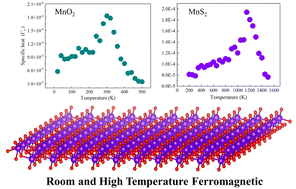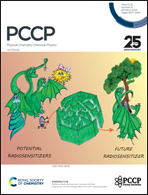First-principles predictions of room-temperature ferromagnetism in orthorhombic MnX2 (X = O, S) monolayers†
Abstract
Two-dimensional ferromagnets with high spin-polarization at ambient temperature are of considerable interest because they might be useful for making nanoscale spintronic devices. We report that even though bulk phases of MnO2 are generally antiferromagnetic with low ordering temperatures, the corresponding MnO2 and MnS2 monolayers are ferromagnetic, and MnS2 is a high temperature half metallic ferromagnet. Based on first-principles calculations, we find that the MnO2 monolayer is an intrinsic ferromagnetic semiconductor with a Curie temperature TC of ∼300 K, while the half-metallic MnS2 monolayer has a remarkably high TC of ∼1150 K. Both compounds have substantial magnetocrystalline anisotropy, out of plane in the case of MnO2 monolayers, and in plane along the b-axis of orthorhombic MnS2 monolayer. Interestingly, a metal–insulator phase transition occurs in the MnS2 monolayer when the applied biaxial strain is beyond −2%. Tuning near this metal–insulator transition offers additional possibilities for devices. The present work shows that MnX2 (X = O, S) monolayers have the properties required for ultrathin nano-spintronic devices.

- This article is part of the themed collection: 2023 PCCP HOT Articles


 Please wait while we load your content...
Please wait while we load your content...